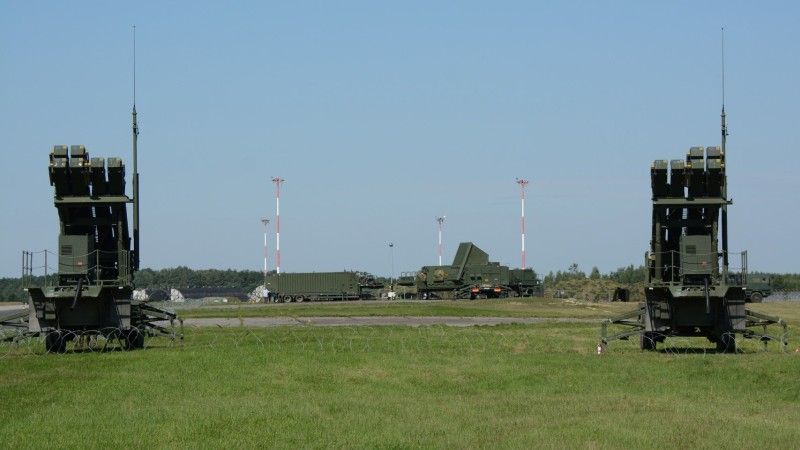Polish Łask AB Protected by the IBCS Missile Defence System

Photo. Armament Agency
The Armament Agency announced that the 32nd Tactical Airbase in Łask is an arena where an exercise involving a Patriot/IBCS battery is taking place.
Polish anti-aircraft unit troops of the 37th Air Defence Missile Squadron of the "Warszawska" Missile Air Defence Brigade are involved in a training exercise at the Łask airbase. As Mariusz Błaszczak, the head of the Polish Ministry of Defence announced via social media channels, the "training pertains to the integration of all elements of the top level of the multi-layered air-missile defence system." Błaszczak noted that the training is the first one also involving the IBCS system.
IBCS is an air defence management and command system that is to adopt the "any sensor, best shooter" principle. Thanks to the fact above, the air defence assets integrated with IBCS may also make use of a variety of sensors and data fusion. For instance, the IBCS-integrated US Patriot batteries will be able to use data fed from the Sentinel radars. The Polish Patriot systems will be allowed to use data fed from the Bystra radars - expected to be integrated within the IBCS network. Furthermore, if cheaper assets come alongside the Patriot missiles (CAMM-ER in Poland, IFPC in the US), then they could be used to destroy targets detected by the Patriot radars, provided they enter the range. This will significantly increase the capabilities of the air defence assets.
IBCS is currently being commissioned in the US Army. In May the system achieved IOC status, entering full-rate production a month before. The Polish 37th Squadron is, according to open sources, the second air defence unit in the world, equipped with the said system. The first one is one of the US Army air defence squadrons that received IBCS elements at an R&D stage. The series manufactured systems will soon be delivered to further units.
The training is very much relevant, as not only does it allow the Poles and the Americans to learn how to handle the IBCS, but also to develop rules for using the system, as these need to be created from scratch, given the fact the system is a brand new solution. That matter was discussed by Col. Michał Marciniak, Deputy Head of the Armament Agency, during the Defence24 DAY.
Let us add that during phase I of the Wisła programme, Polish communication nodes and EOCs, manufactured by the domestic industry, would be integrated with the IBCS; the said integration would be finalized after the baseline combat readiness is achieved, later this year. Poland has also obtained authorization recently to procure another 6 Patriot batteries (12 fire units), tailored to work with IBCS, with more than 600 PAC-3 MSE missiles, and 12 LTAMDS radars, for up to 15 bn. dollars. During phase II of the Wisła programme, and the Narew programme, a larger portion of IBCS elements would be manufactured with the involvement of the Polish industry. Configuration somewhat aligned with the one operated by the US Army has been procured during phase I.
In the longer run, further components of IADS would be plugged into IBCS, such as the Polish SPL passive detection system, P-18PL active radar, or the Sajna multifunctional fire control system developed for the Narew programme. In the US, datalink capability involving the F-35A has been preliminarily tested, the same applies to cooperation between the IBCS and ground-based rocket artillery systems. This will further enhance the system's capabilities, especially when it comes to multi-domain operations.



